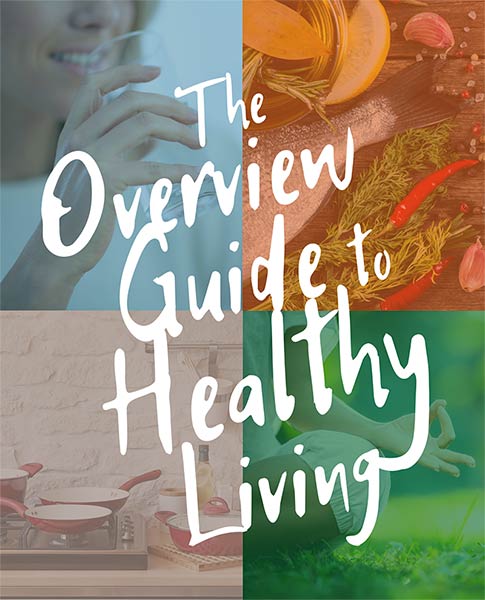
The B Vitamins and Their Multilayered Importance In Human Physiology
Folate, Vitamin B12, Vitamin B6, Choline
B vitamins are a class of water-soluble vitamins that are essential to maintain health and to carry out a host of metabolic functions. There are 8 different B vitamins that are necessary for several organs and systems to function optimally. B vitamins are utilized for cellular functioning, carbohydrate metabolism and the production of red blood cells. They are also needed for healthy skin and neurotransmitter formation. Symptoms of B vitamin deficiency vary from fatigue to anemia, nervous system dysfunction, compromised immunity and skin issues. While over consumption of B vitamins from food sources is quite rare and generally not worrisome, dangerously high intake of B vitamin through supplementation leads to hypervitaminosis B. This condition comes with side effects that include liver problems, blurry vision, high blood sugar, and numbness.
What Is Folate?
Folate is needed to produce healthy red blood cells; it reduces the risk of neural tube defects such as spina bifida and, together with vitamin B12 and vitamin C, is an important coenzyme in the synthesis of nucleic acids and the metabolism of amino acids. Optimal folate intake helps in the prevention of folate deficiency anemia.
The Importance of B12
Vitamin B12 is an important factor for the formation of red blood cells, and it is essential in preventing megaloblastic anemia. Vitamin B12 is important for DNA synthesis. Cellular metabolism is dependent on this vitamin, which has a role in the metabolism of fatty acids as well as amino acid synthesis. Vitamin B12 is also necessary for the absorption of folate, and it is necessary for conversion of carbohydrates into glucose. Vitamin B12 also plays a role in white blood cell formation, affecting immune system function.
What To Know About Vitamin B 6
Vitamin B6 (Pyridoxine) exists in various coenzyme forms (pyridoxal 5 phosphate (PLP) and Pyridoxamine 5 phosphate (PMP)). It plays a role in over 100 enzyme reactions, and it is involved in the metabolism of protein, carbohydrates, and lipids. Vitamin B6 is essential for brain development and for immune function. It is vital to synthesize neurotransmitters and to ensure adequate levels of homocysteine. It is also essential for gluconeogenesis, glycogenolysis, and hemoglobin formation. Vitamin B6 works synergistically with folate and vitamin B12 to reduce homocysteine levels. High level of homocysteine is a risk factor in heart disease. While the mechanisms aren’t fully understood, it appears that high homocysteine levels can damage arteries, leading to atherosclerosis and blood clots.
What You Need To Know About Choline
Choline is an organic, water-soluble compound similar to B vitamins. It is manufactured in the liver, and it is also found in foods such as liver, muscle meat, fish, eggs, beans, wheat germs, and nuts. Choline is essential in metabolism, and it is needed for cell membrane integrity. It is important for DNA synthesis, cell signaling, fat transport and metabolism. Choline is necessary to make acetylcholine, an important neurotransmitter; therefore, it is crucial for the nervous system. Choline is a source of methyl groups and is needed to produce two major phospholipids (phosphatidylcholine and sphingomyelin) crucial to cell membranes.

What is the RDA level for each of the vitamins? What is the upper limit for each of the vitamins and What are the signs or symptoms of deficiency and toxicity for each of the vitamins?
The RDA for vitamin B6 varies depending on age, sex, and for women RDA changes also during pregnancy and breastfeeding. RDA for babies from birth to six months is 0.1mg; it is 0.3mg for babies from 7 months to 1 year of age. From 1 to 3 years it is 0.5 mg, 4 to 8 years is 0.6 mg while 4 to 8 years 0.6 mg, 9-13 years is 1.0 mg. RDA for males and females between 19 to 50 years is 1.3 mg. RDA of vitamin B6 for males above 51 years is 1.7 mg and for females it is 1.4 mg.
The RDA for vitamin B12 is dependent on age. The RDA for breastfeeding mothers is 2.8 mcg, while for pregnant teens and women it is 2.6 mcg. Teens and adults are recommended to take 2.4 mg per day of vitamin B12. The RDA for children is 1.2 mcg for the age group 4-8 years, and 1.8 mcg for 9 to 13 years. Infants up to 6 months need 0.4 mcg of vitamin B12 per day; the recommendation for infants 7 to 12 months is 0.5 micrograms per day, and children between 1-3 years require 0.9 mcg per day.
The RDA for folate is also dependent on age. Women and men above 19 years should take 400 mcg of dietary folate equivalents (DFE) per day. The RDA for pregnant women is 600 mcg per day, while RDA for lactating women is 500 mcg. The RDA for people who habitually consume alcohol is at 600 mcg.
The Office of Dietary Supplements states that there is insufficient data to establish the RDA for choline; however, adequate intakes (AI) are available. AI is defined as the “recommended average daily nutrient intake level based on approximations of observed mean nutrient intake by a group (or groups) of apparently healthy people that are assumed to be adequate” (Dietary Reference Intakes: applications in dietary assessment). The AI for individuals above 19 years is 550 mg/day for males and 425 mg/day for females. The AI for pregnant women is 450 mg/day, and for lactating women it is 550mg/day. AI is used as a reference levels when there is not enough evidence to develop an RDA.
Choline deficiency can damage the muscles, liver, and it is linked to the development of nonalcoholic fatty liver disease (NAFLD). Most people in the US consume less than the daily requirement of choline; however, thanks to endogenous production of choline by the liver, deficiency in healthy and non pregnant individuals is rare. High doses of choline can cause dizziness and can lower blood pressure. Choline toxicity can also cause also vomiting, increased sweating, salivation, and it can cause fishy body odor.

Vitamin B 12 deficiency causes fatigue, weakness, constipation, loss of appetite, weight loss, and megaloblastic anemia. It also leads to numbness, balance problems, depression, dementia, and confusion. Vitamin B12 toxicity is rare, and it generally manifests with diarrhea, itching, blood clots, numbness of the extremities, and allergic reactions.
Excessive folate intake masks the symptoms of vitamin B 12 deficiency and can cause damage to the nervous system. Its deficiency mainly leads to folate deficiency anemia, diarrhea, gray hair, peptic ulcer, poor growth, glossitis, and ulcers in the mouth.
It is rare to have an isolated deficiency of vitamin B6. While uncommon, vitamin B6 deficiency is associated with microcytic anemia, cheilosis, dermatitis, glossitis, depression, confusion, and a weakened immune system. An excess of the vitamin B6 leads to sensory neuropathy, ataxia, skin lesions, photosensitivity, nausea, and heartburn. These signs and symptoms are dose-specific.
Where are these vitamins found in the diet and what may impede availability and absorption? How does the concept of food poverty impact a client’s ability to obtain these vitamins?
Vitamin B6 is found in a variety of foods, including salmon, beef, liver, pork, potatoes, bananas, and avocado. Other sources include fortified cereals, poultry, pistachio nuts, and non-citrus fruits.
Beef liver is a great source of folate, and boiled spinach comes right behind. Other good sources include broccoli, leafy green vegetables, peas, kidney beans, chickpeas, and fortified cereals. Pregnant women should take folate supplements and consume foods high in folate to prevent neural tube defects.
The best sources of vitamin B12 are liver and clams. Other good sources are meat, fish, milk, cheese, eggs, dairy, and fortified cereals.
Dietary sources of choline include meat, poultry, fish, milk, eggs, gravies, salads, nuts and seeds, and wheat germ.
Several factors can hinder the absorption and availability of vitamins. Various medications can affect the absorption of various vitamins like vitamin B6. These medications include anti-seizure drugs, the bronchodilator theophylline, and antibiotics like cycloserine. The mechanisms for drug-nutrient interactions vary as well. For instance, cycloserine increases the urinary loss of pyridoxine. Availability and absorption of vitamin B12 are also affected by various gastrointestinal conditions like ulcers, inflammatory bowel disease and other digestive disorders, surgical conditions like gastrostomy, and, of course, medications. The medications include chloramphenicol, omeprazole, cimetidine, and metformin. It is worth noting B vitamins are also best absorbed from food sources; however, folate supplementation is needed in pregnancy and some studies show that supplemental folate is better absorbed than dietary folate (85% bioavailability of supplemental compared to 50% from food sources). It is important to identify factors that can affect the vitamins’ availability and to develop proper strategies that will ensure that our clients have optimal intake and absorption.
What Happens When Food Poverty Is A Significant Component In Mal-nutrition?
Food poverty is the inability to access or purchase foods that make up a healthy diet. In other words, food poverty reduces access to the healthy foods that provide an abundance of vitamins and minerals. Food poverty is linked to malnutrition, obesity, vitamin deficiencies, weakened immune system and other diseases, and disordered eating (people living in food insecurity tend to eat even when not hungry, as a guard against food uncertainty). Since food poverty translates to limited access to healthy foods, people affected by food poverty do not meet RDAs and AI of vitamins and minerals.
References:
Stipanuk MH, Caudill MA, editors. Biochemical, physiological, and molecular aspects of human nutrition. 4th ed. St. Louis, Mo: Elsevier; 2019. 959 p.
Bjørndal B, Bruheim I, Lysne V, Ramsvik MS, Ueland PM, Nordrehaug JE, et al. Plasma choline, homocysteine and vitamin status in healthy adults supplemented with krill oil: a pilot study. Scandinavian Journal of Clinical and Laboratory Investigation. 2018 Nov 17;78(7–8):527–32.
Kennedy DO. B vitamins and the brain: mechanisms, dose and efficacy—a review. Nutrients. 2016 Feb;8(2):68.
Office of dietary supplements – choline [Internet]. [cited 2020 Nov 15]. Available from: https://ods.od.nih.gov/factsheets/Choline-HealthProfessional/
Office of dietary supplements – vitamin b6 [Internet]. [cited 2020 Nov 15]. Available from: https://ods.od.nih.gov/factsheets/VitaminB6-HealthProfessional/
Office of dietary supplements – vitamin b12 [Internet]. [cited 2020 Nov 15]. Available from: https://ods.od.nih.gov/factsheets/VitaminB12-HealthProfessional/
Vitamins and minerals – B vitamins and folic acid [Internet]. nhs.uk. 2017 [cited 2020 Nov 15]. Available from: https://www.nhs.uk/conditions/vitamins-and-minerals/vitamin-b/
Sobczyńska-Malefora A, Harrington DJ. Laboratory assessment of folate (Vitamin b9) status. Journal of Clinical Pathology. 2018 Nov 1;71(11):949–56.
Siddiqui F, Salam RA, Lassi ZS, Das JK. The intertwined relationship between malnutrition and poverty. Front Public Health [Internet]. 2020 [cited 2020 Nov 15];8. Available from: https://www.frontiersin.org/articles/10.3389/fpubh.2020.00453/full
